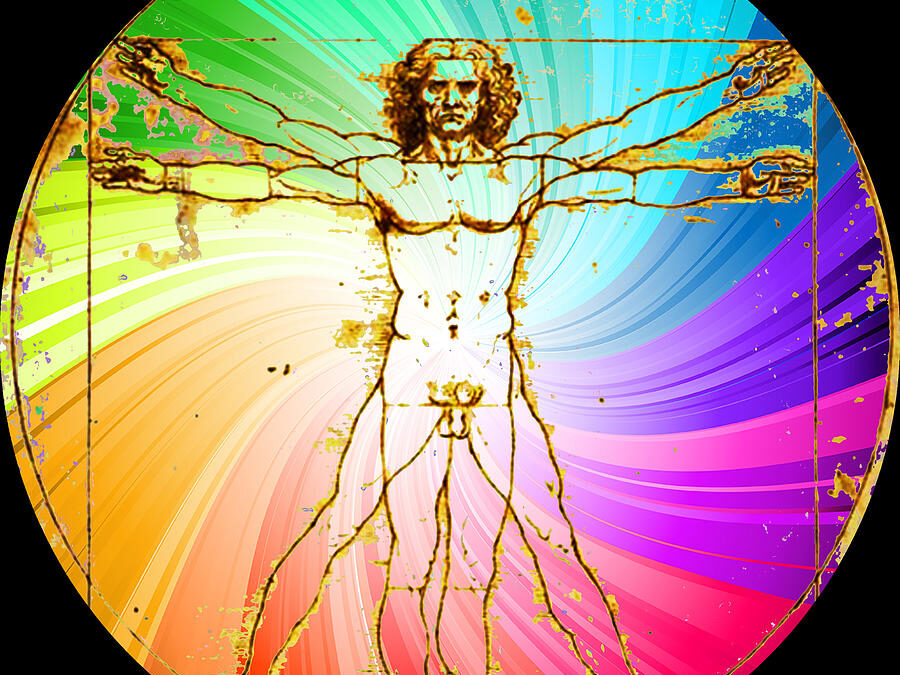
by Moe | Jun 15, 2022 | Meaning of Symbols, Meaning of Words
The Etheric Body is one of the various names given to what has also been called by various esoteric authors as the Astral Body, Light Body, Body of Light, Human Energy Field, or Aura, which all mean the same thing and can be used interchangeably.
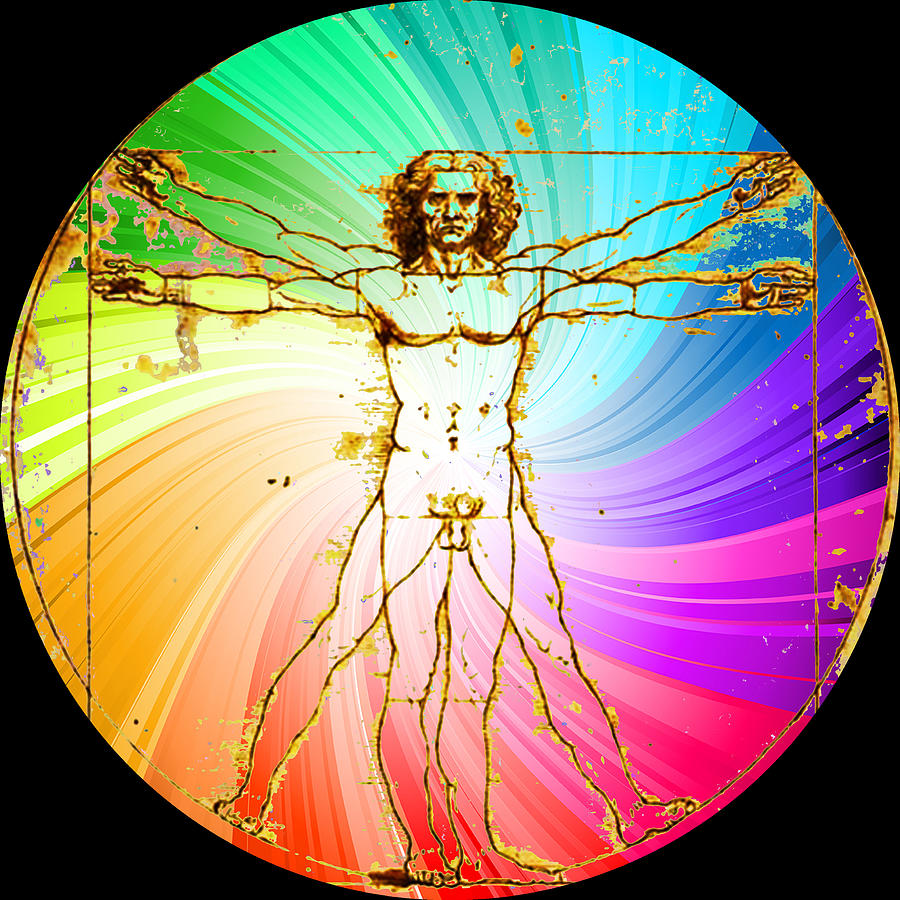
The etheric body is part of the human constitution in the form of light energy or luminous fluid. It is considered the energetic template of the physical body that has the ability to act as a mediator between the soul and body and can also record and store information.
The etheric body is made of a material known as ether (aether) that comes from the heavens (cosmos or space). In a similar sense, the term astral body refers to the stars. Very similar descriptions and words such as the light body and aura have been used throughout traditional history to modernity.
This mysterious and luminous material has been described as the light or energy field of the body to be both liquid and gaseous in nature. It is not visible to the naked eye, and some people claim that it can only be seen with spiritual sight or when it interacts with physical matter in some way (i.e., through magnetism).
As I researched this subject, I found that we can use modern science to identify what exactly the etheric body is and I can provide examples of my studies. In this article, I will detail the various aspects of its history with various quotes from people who have written on the subject and also the results of my research. I also believe today that we can witness, measure and record this phenomenon with magnetic image resonance machines, which I will explain in my next article on the Science of the Etheric Body.
The first people to write about and debate what aether was were the Ancient Greeks through the writings of various philosophers such as Plato, Aristotle, and Proclus. This tradition continued among many of the world’s greatest thinkers, such as Descartes, Paracelsues John Dee, Eliphas Levi, Issac Newton, Rudolph Steiner, Albert Einstein, and Nikola Tesla, who have all written and or debated about its existence.
As I explained in my previous essay, according to the Greeks, aether (Greek αἰθήρ, aithēr), also spelled ether, is the fifth element that fills the region of the universe above the terrestrial sphere. It is a type of heavenly fire, light, or luminous substance that is always in motion. But they claimed that it is not to be compared to real fire, and is distinct from the other four classical elements (Platonic Solids), Earth, Water, Air, and Fire.
Both Plato and Aristotle also referred to ether as “Idea” (Greek ίδέα), or ίερόν, (Greek hieron “a divine thing”) because it was thought to be heavenly, i.e. not of the material world (matter) and have the power of life. Plato, in his Timaeus, described Aether as that “which God used in the delineation of the universe.”
As it relates to the Ancient Greek concept of the human and the etheric body, I have found that pneuma, topa, and vital heat were used interchangeably by fellow Platonists in the exoteric sense by some authors, such as Aristotle and Proculus. Today, as I mentioned above, we also have the terms Astral Body, Light Body, Body of Light, Human Energy Field, or Aura, which all represent the same phenomena of the creative fire within humans and all life.
In Aristotle’s biology, pneuma is mentioned in connection with the soul and a number of bodily functions. It is compared to ether, the fifth element from which the heavenly bodies are composed. In explaining the abilities of the soul within the context of functional transmission, he describes pneuma as analogous to ether (the upper fiery-air).
Aristotle states that the hot substance or vital heat included in the semen is a “natural principle in the breath [pneuma], being analogous to the element of the stars” (i.e., the Aether). He wrote;
“Now, so far as we can see, the faculty (δύναμις) of Soul of every kind has to do with some physical substance which
is different from the so-called ‘elements’ (στοιχεȋον) and more divine than they are …….
In all cases the semen contains within itself that which causes it to be fertile (γόνιμα)—what is known as ‘hot substance’ (θερμόν), which is not fire nor any similar substance, but the pneuma which is enclosed within the semen or foam-like stuff, and the natural substance which is in the pneuma; and this substance, is analogous to the element which belongs to the stars. (De generatione animalium, Book II, Peck 1949, p. 171, II 736b30-737al)
The next authority after Aristotle to speak on this subject, but using a different word than pneuma or aether was the Neoplatonist Proclus of Athens (412–485 C.E.). He was the most authoritative philosopher of his time and is said to have been the first person to speak of place (topos) as the intermediary between the soul and body, or what is also known as the “etheric body.”
Proclus had a theory that place (topos) was a three-dimensional extension, and it was a luminous body (soma). He believed that this place had life (empsukhos), which moved other bodies. Proclus said there were subtle “planes”, and these planes had two bodies or “carriers” (okhema) intermediate between the rational soul and the physical body. He claimed that topos as the medium between soul and body, and identified it with the luminous “vehicle” of the soul.
One of the last Neo-Platonists, Simplicius of Cilicia, tells us that Proclus’ hypothesis was novel and unique.
The Greek Stoics had called the divine creative fire by the names pneuma or aether. They believed that the cosmos was ruled by a divine mind (nous) and permeated by pneuma, an aether composed of fire and air.
Chrysippos took the lead in ascribing the generality of natural phenomena to tensions in the pneuma, an aether-like blending of air and fire that he held to pervade the cosmos.
The Greek term pneuma was later used in religious contexts and was associated with the spirit and the divine.
This opposition of theories led to many Greek philosophers to examine and comment upon the subject.
In the 17th century, René Descartes (1596-1650) said ether was the medium of space in Principia philosophiae (1644). His theory was in a similar line with the Anceint Greeks concept of ether as the 5th element that made up the World Soul or what is also called the Noosphere today.
Descartes’ was a French philosopher, mathematician, and scientist and is best known for his philosophical writings, which include several essays on optics, the philosophy of mathematics, and metaphysics.
He claimed that ether was the elements of vortices that transmitted forces between bodies at a distance, were also transmitted by direct contact. When two bodies were not touching each other, such as two magnets, or the moon’s influence upon the tides, he believed they were still in direct contact through intermediate contiguous matter I ether.
Descartes said that force is transmitted through ether by two agencies, pressure and impact. He believed that space was occupied by ether. Although it was imperceptible to the senses, it was capable of transmitting forces on the material bodies immersed in it.
Descartes said the ether particles are in constant spinning motions of closed chains of particles (vortices). He believed that matter is made up of extremely small particles called “corpuscles” and that these corpuscles are attracted to each other by ether.
The difference between Descartes’ theory and modern theories is that he believed that this attraction occurs because of the motion and rotation of matter, not because mass attracts mass.
Descartes also developed three laws of motion:
The law of inertia – objects at rest tend to stay at rest, and objects in motion tend to stay in motion unless acted upon by an outside force.
The law of action-and-reaction – every force has an equal counter-force, so if one body exerts a force on another body, then that body exerts a force back on the first body equal in magnitude but opposite in direction.
The third law – if one body exerts twice as much force on another body than it experiences from that
Descartes’ theory was never accepted by his contemporaries, who adhered to Newton’s theories of action at a distance. Descartes’ theory remained forgotten until James Clerk Maxwell rediscovered it in 1864, which I will discuss below.
Isaac Newton (1642 – 1727) dedicated much of his career to analyzing and developing further the ether theory. He called ether an elastic medium that carried vibrations and had pervaded the pores of all material bodies. Newton wrote:
All space is permeated by an elastic medium or aether, which is capable of propagating vibrations. This aether pervades the pores of all material bodies and is the cause of their cohesion; its density varies from one body to another, being greatest in the free interplanetary spaces.
One of Isaac Newton’s major theories was that ether played a major role in gravity and light in the Third Book of Opticks (1st ed. 1704; 2nd ed.) He described it as the medium that “flows” continually downward toward the Earth’s surface and is partially absorbed and partially diffused as an elastic, invisible, strong, and subtle matter that existed everywhere in different forms.
In the 19th century, James Clerk Maxwell showed that electricity and magnetism were related phenomena. He proposed that light waves were electric and magnetic waves traveling through an electromagnetic field called ether. This led to theories about a luminiferous (light-bearing) ether, which became popular during this period.
Maxwell developed a mathematical theory of electromagnetic waves that propagated through the luminiferous ether, which permeates all space. He had used ether to explain electric and magnetic phenomena, now called Maxwell’s equations, for the understanding that light is an electromagnetic wave.
Maxwell (1878) wrote:
“Aethers were invented for the planets to swim in, to constitute electric atmospheres and magnetic effluvia, to convey sensations from one part of our bodies to another, and so on, until all space had been filled three or four times over with aethers. The only aether which has survived is that which was invented by Huygens to explain the propagation of light.”
Rudolph Steiner (1861-1935) considered the etheric body as distinct from the physical material reality, being intermediate between the physical world and the astral world. He believed that it was formed as a result of thinking and contained a person’s thoughts.
Steiner said:
“Only if I could perceive how the percept of an object affects the percept of the subject, or–conversely–only if I could observe the construction of a perceptual form by the subject, would it be possible to speak like modern physiology and the critical idealism built upon it…The link between the subjective and the objective is not built…by any perceptible event. It is built by thinking alone.”
For Steiner, it was also part of the earth’s biofield and all living things—plants, animals, and humans. Without the etheric body, one only has left a dead physical body whose structure and organization are now subject only to entropic forces and decay. He often referred to the etheric body (Ätherleib or “Life Body”) in association with the etheric formative forces and the evolution of man and the cosmos.
According to Steiner;
“Memory is a subconscious reading activity. In memory remain the signs which the etheric body engraved upon the physical body. You may have lived through something years ago and gathered from it the necessary experience; what remains behind is the impression which the etheric body engraved upon the physical body, and when you remember this past experience your memory process is a subconscious act of reading.”
It is an energy field composed of millions of tiny particles called etheric cells that are constantly interacting with each other to create all the different structures and functions of the body. Each etheric cell contains information about how to build certain parts of the body, such as muscles, bones and organs.
The etheric cells are organized into groups called chakras that are responsible for different aspects of our health and well-being, such as digestion or sexual function. Each chakra has a specific purpose and role within our bodies, which is why we feel pain or discomfort when they aren’t functioning properly or if they become blocked by negative emotions or thoughts.
Its color varies from individual to individual, but ranges from bright white to deep purple depending on your state of being. When you’re healthy, your etheric body can be seen as an aura surrounding your physical form has a vibrant, colorful aura that reflects its energetic functioning.
According to Steiner, the etheric field can be perceived by a person gifted with clairvoyance as being of “peach-blossom color”.
If it’s damaged or unhealthy, it may appear dull, cloudy, gray or blackened in appearance due to disease or trauma.
Russian Esotericist, Madame Blavatsky
The etheric plane (see also Etheric body) is a term introduced into Theosophy by Charles Webster Leadbeater and Annie Besant to represent one of the planes
According to Max Heindel, the Grand Master of the American Rosicrucuans (AMORC), the etheric body, composed of four ethers, is called the “Vital Body” since the ether is the way of ingress for vital force from the Sun and the field of agencies in nature which promote such vital activities as assimilation, growth, and propagation.
It is an exact counterpart of our physical body, molecule for molecule, and organ for organ, but it is of the opposite polarity. It is slightly larger, extending about one and one-half inches beyond the periphery of the physical body.
It is a template that holds the knowledge (gnosis), information, and our memories, that allows the physical body to function and exist in the world, i.e., this dimension. It has been described as a “blueprint” for the physical body, and contains all the anatomical designs on a cellular level.
Freemason and author, Manly P. Hall calls ether the sacred 5th element, and says it represents the brain. Hall wrote;
“As man’s physical body has five distinct and important extremities–two legs, two arms, and a head, of which the last governs the first four–the number 5 has been accepted as the symbol of man.
By its four corners the pyramid symbolizes the arms and legs, and by its apex the head, thus indicating that one rational power controls four irrational corners.
The hands and feet are used to represent the four elements, of which the two feet are earth and water, and the two hands fire and air.
The brain then symbolizes the sacred fifth element–æther–which controls and unites the other four. If the feet are placed together and the arms outspread, man then symbolizes the cross with the rational intellect as the head or upper limb.”
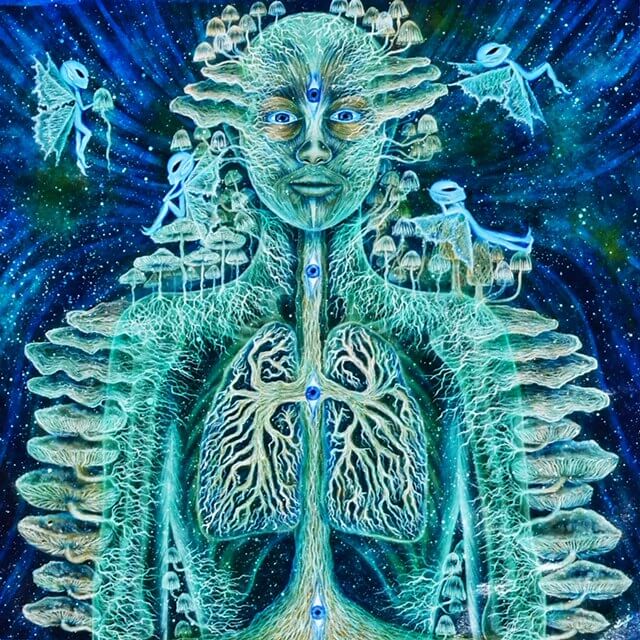
by Moe | Nov 12, 2021 | Demons, Meaning of Words, Mystical Christianity
The Bible introduces us to a substance in the atmosphere and fatness of the earth called the “Dew of Heaven.” It is connected to the Holy Spirit, the manna of Heaven, and wisdom. A symbol of material prosperity (Deuteronomy 33:13, 28; Zechariah 8:12), and its absence is represented as a sign of Divine displeasure (2 Samuel 1:21; 1 Kings 17:1; Haggai 1:10, 11) It is among the choicest parts of the earth (Genesis 45:18) and with it, we have plenty of corn and wine, which is the produce of the soil (cf. Deuteronomy 33:28).
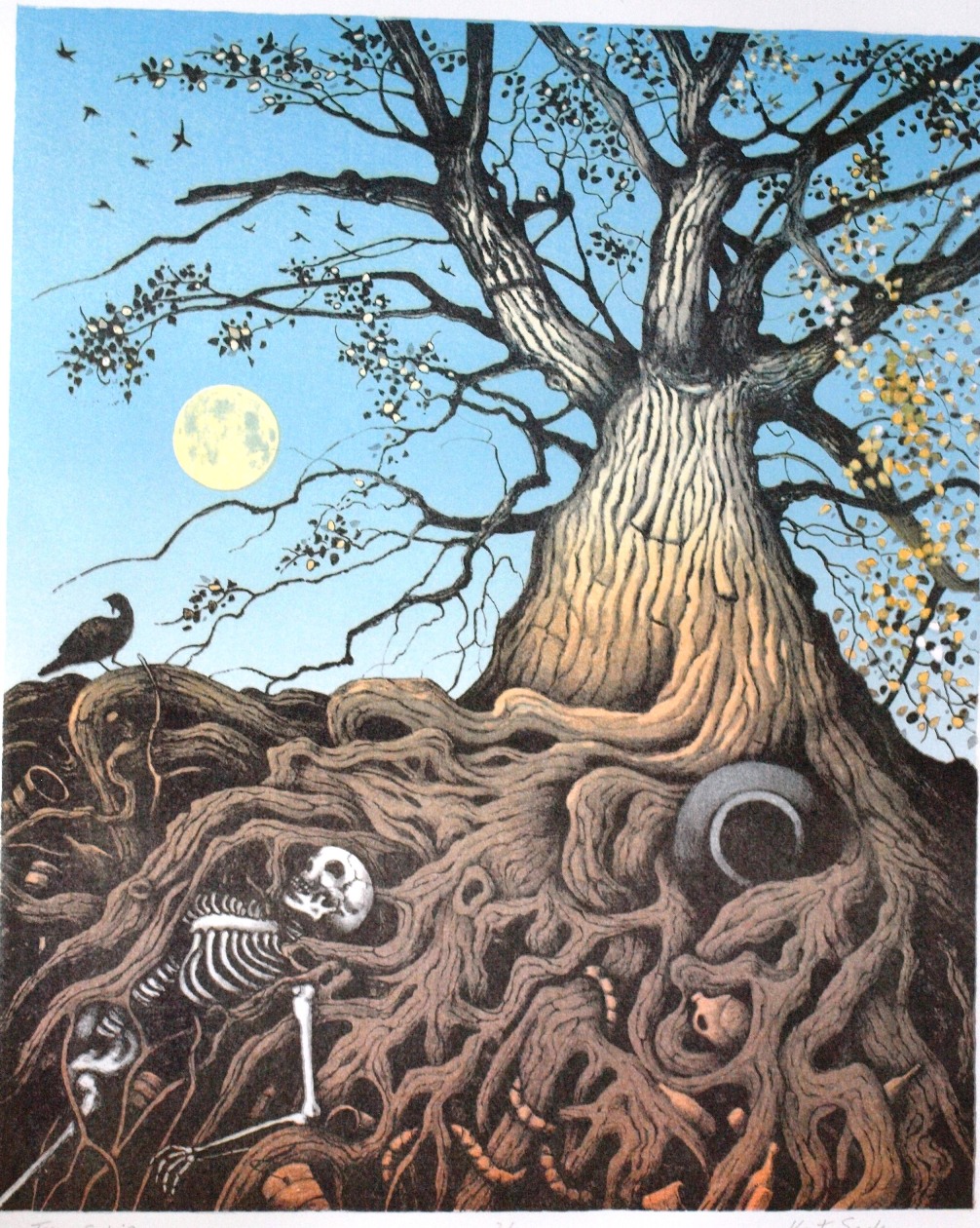
This peculiar Dew substance is also likened to a tree with its stump within the earth and part of the land that also could be drenched upon men turning them from a man into Beasts by taking over their mind as we learn in Daniel 4:15;
“He called out in a loud voice: ‘Cut down the tree and chop off its branches; strip off its leaves and scatter its fruit. Let the beasts flee from under it, and the birds from its branches. But leave the stump with its roots in the ground, and a band of iron and bronze around it, in the tender grass of the field. Let him be drenched with the dew of heaven and graze with the beasts on the grass of the earth. Let his mind be changed from that of a man, and let him be given the mind of a beast till seven times pass him by.”
In Deuteronomy 33:13, this dew reached to heaven and also lies beneath us – “And of Joseph he said, Blessed of the LORD [be] his land, for the precious things of heaven, for the dew, and for the deep that coucheth beneath.”
These Beasts i.e men like King Daniel were to live in darkness in the shadow of death bounded by what are called chains because they rebelled against the Most High God. As it is said in Psalm 107:10; “For He satisfies the thirsty and fills the hungry with good things. Some sat in darkness and in the shadow of death, prisoners in affliction and chains, because they rebelled against the words of God and despised the counsel of the Most High.”

As I explained in my essay, The LORD of Hosts, The Most High i.e. God represents what is called the Supreme Being, the Creator, or Father of the world. While the word ‘LORD’ or Yahweh (Jehova) is a power, force, and or a person on earth having an honorary title that has influence and authority over others on earth and in hell ie the underworld. For disobeying these natural laws, people like Daniel were put under a spell or curse in which they live like Beasts and are unable to know God who is the ultimate ruler over humankind.
In Daniel 4:25, it is said;
“This is the interpretation, O king, and this is the decree that the Most High has issued against my lord the king: You will be driven away from mankind, and your dwelling will be with the beasts of the field. You will feed on grass like an ox and be drenched with the dew of heaven, and seven times shall pass you by, until you acknowledge that the Most High rules over the kingdom of mankind and gives it to whom He wishes. As for the command to leave the stump of the tree with its roots, your kingdom will be restored to you as soon as you acknowledge that Heaven rules.”
In the old Ancient Greek text translated from the Phoenician/Hebrew, the darkness can also be translated as ignorance, wickedness, misery, destruction, and death. While the chains which bound these people like Daniel is variously translated as barzel or ubarzel in the original Phoenician. Many interpreters who study the doctored script, ignorantly claim this world means iron, but this is not the true meaning.
My research shows that the word barzel is connected to the word fetters. This word is connected to the Arabic frzn and firzil, which also means fetters and the Aramaic parzel, Syriac parzel, and Akkadian parzillu.
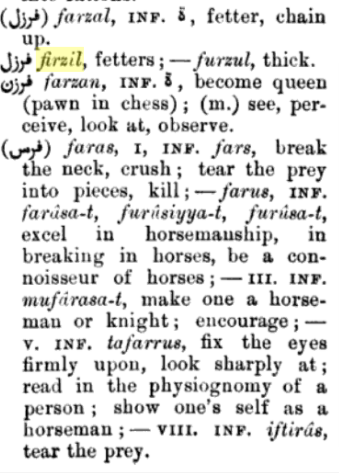
Barzel or Parzel is also related to the modern English, parcel which means a thing or collection of things wrapped or packed up; small package; bundle or land that has been sectioned off. It can also mean a wrap (rope) which mariners use with strips of tarred canvas, before binding it with yarn as part of a traditional technique to reduce chafing.

These words, barzel or parzel can also be connected to the Demon of the Wind and Prince of the Lower Aerial Kingdoms named Pazrael or Pazula also spelled Fazuzu, and Pazuza. A demon who is said to control the west and southwest winds bringing famine and locusts.
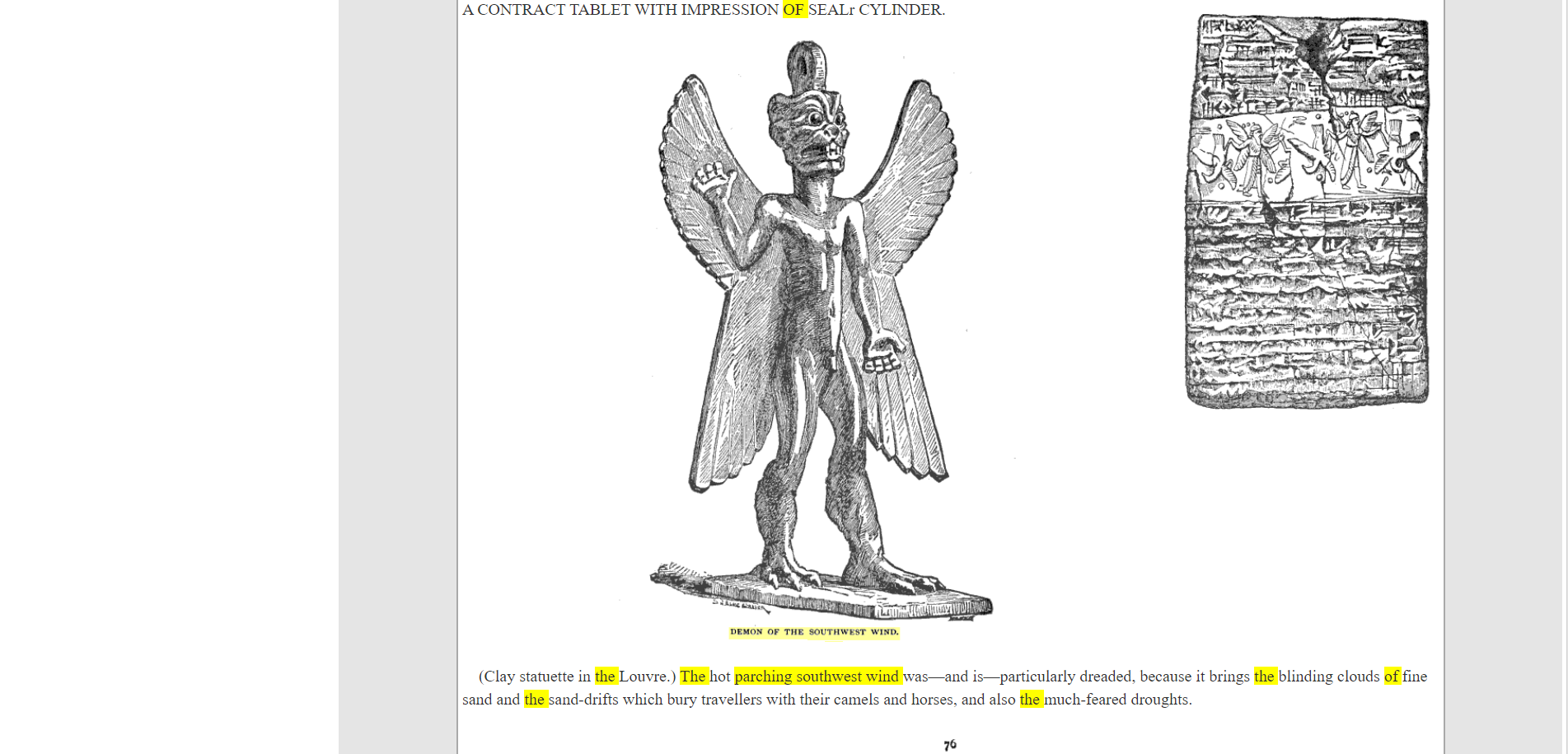
In the Scripture, the desert and demons of the wind are some of the most formidable foes of humankind like those found in Leviticus xvi. 9 which specifically gives the name of one desert demon to Azazel, and in Isaiah 34 to Lilith and to several demons of the same class.
Hence, we must understand by “the band” the chains by which the unfortunate king would be confined is metaphorically speaking of fetters and not actual iron chains. The word fetter is also tied to the Latin word fetor and fetid – meaning stench or a strong smell of which Francis Bacon said is related to putrefaction or moldy.
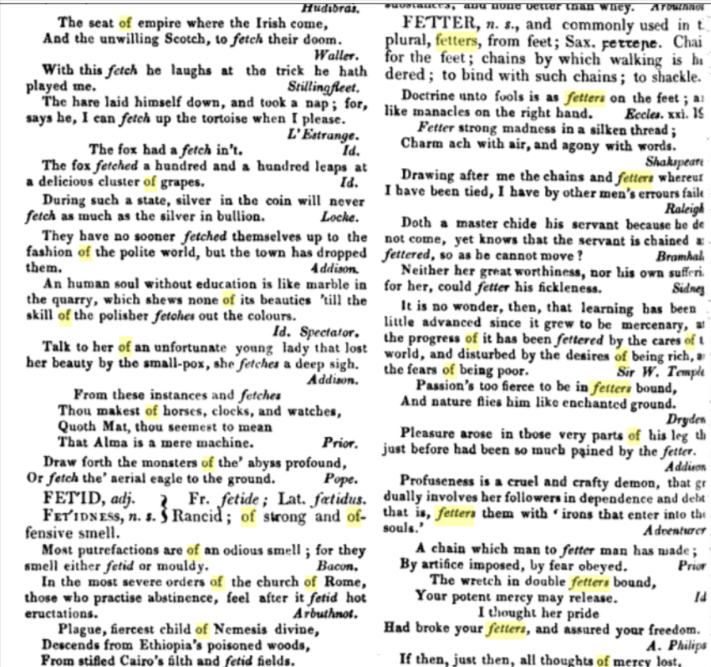
Fetters are also connected to fools, and the unwise who have them up on their feet while learning is to wise men as an ornament of gold as we learn in Ecclesiasticus 21:16-21;
“As is a house that is destroyed, so is wisdom to a fool: and the knowledge of the unwise is as talk without sense. Doctrine unto fools is as fetters on the feet, and like manacles on the right hand. A fool lifteth up his voice with laughter, but a wise man doth scarce smile a little. Learning is unto a wise man as an ornament of gold, and like a bracelet upon his right arm.”
These chains i.e., fetters, were under the control of unclean spirits, and they restrained and seized demons.
For example, in Luke 8:29, we learn, “For Jesus had commanded the unclean spirit to come out of the man. Many times it had seized him, and though he was bound with chains and shackles, he had broken the chains and been driven by the Demon into solitary places.” However, some of these demons could easily break the chains and could not be subdued as it is said in Mark 5:4-5;
“This man had been living in the tombs and could no longer be restrained, even with chains. Though he was often bound with chains and shackles, he had broken the chains and shattered the shackles. Now there was no one with the strength to subdue him. Night and day in the tombs and in the mountains, he kept crying out and cutting himself with stones.”
Throughout Daniel 4-5, the beastly king was ‘drenched by dew’ three times until his sanity was restored. (Dan. 4:15, 23, 25, 33, 5:21) First in the dream, v.15, then in the interpretation in v. 25, and again in the outcome v.33 when the king was ‘driven away from people, and ate grass like cattle. His body was drenched with the Dew of heaven until . . . his sanity was restored”.
“As for the command to leave the stump of the tree with its roots, your kingdom will be restored to you as soon as you acknowledge that Heaven rules.” (Daniel 4:26)
Nebuchadnezzar represented the sons of rebellion, the fallen ones who defy God like wild beasts, even though, all the while, he was drenched with blessings from heaven. This supernatural Dew God continues to send down upon the just and unjust to drive them to repentance and thanksgiving. A type of symbiotic relationship with the Dew that can also become parasitic, issuing our punishments according to our deeds.
In contrast to the people who have rebelled against the Most High God, i.e. the Beasts (Behemoths/Behemoths/Fallen Angels/Demons) who lived chained (fetters/molds/fungi) in darkness and ignorance, in Proverbs, a wise man is compared to a fountain and tree of life, whose words and deeds refresh and encourage.
The Dew ie, oil or manna, is a symbol of the Holy Spirit associated with light, knowledge, and everlasting life throughout the Scripture. A reminder to God’s people of the death and resurrection of Christ. Dew is connected with the outpouring of the Holy Spirit or the anointing of the head, which is symbolized by the pouring of water or fire in Baptism. The rite of induction into the priesthood — in the New Covenant, baptism. Baptism is also our induction into the Body of Christ. Psalm 133 stresses the unity of God’s people as they are ingrafted into the priesthood of the Greater Aaron, and share in the “one baptism” — the Baptism of Christ.
Dew is also a symbol of a metaphysical oil or manna involved in Baptism, the resurrection of the dead who live in the Dust but are awakened in the morning to become God’s people, and the washing of regeneration and renewal of the earth.
As it is said on Issaih 26:19;
“We were with child; we writhed in pain, but we gave birth to wind. We have given no salvation to the earth nor brought any life into the world. 19Your dead will live; their bodies will rise. Awake and sing, you who dwell in the Dust! For your Dew is like the Dew of the morning, and the earth will bring forth her dead. Go, my people, enter your rooms and shut your doors behind you. Hide yourselves a little while until the wrath has passed.”
The Dew of heaven is a symbol of God’s blessings in general. Jacob received the blessings as the firstborn; Isaac promised Jacob that as the earth would produce its fatness of grain and new wine, the heavens would also create Dew (Gen. 27:27-29). Thus when Jacob is restored to God’s favor after the exile, they receive the blessings of Jacob, including the promise of Dew (Zech. 12:8) again.
The word Dew is variously translated as Tal, Dal, Del, Yal, Zal, or Zel in the Scripture. The Oxford Dictionary also lists the Old English dæl, of Germanic origin; related to Old Norse dalr, Dutch dal, and German Tal, also to dell. In ancient literature, Dadal is the name of an Akadian Fish God. It is connected to the Arabic Zal.
From Zal or Zel, we find the Demon called Azazel from Leviticus in the Scripture and The Book of Enoch. He is among the chief of the spirits by whose doctrine and influence the earth was corrupted in the book of Enoch. According to some of the Church Fathers, Azazel is connected to Satan or the Devil and many biblical interpreters translated the name as “scapegoat” in Leviticus xvi, 8, 10.
Amongst the Ancient Gnostics, there is the God Yaldabaoth, who is first mentioned in “The Cosmos, Chaos, and the Underworld” as one of the twelve angels to come “into being [to] rule over chaos and the [underworld]”. In the “Gospel of Nicodemus,” Yaldabaoth is called Satan. In the Nag Hammadi Library under The Apocryphon of John (The Secret Book of John – The Secret Revelation of John), it states that Yaldabaoth is the Chief Archon created by the Goddess Sophia in the “form of a lion-faced serpent, with its eyes were like lightning fires which flash. In Pistis-Sophia, Yaldabaoth is spoken of as residing in the “Great Chaos which is the Outer Mist”, where, with his Forty-nine Daemons, he tortures wicked souls (pg. 382).
In old magical books, he was the Chief demon presiding over the elements, elementals, or what I would call today – Chief of the fungi/mold Kingdom.
We find the name Dal in the Dál Riata, Dál Riada or Dalriada Scots, which was a Gaelic kingdom that encompassed the western seaboard of Scotland and the north-eastern corner of Ireland in the 6th and 7th centuries, it covered what is now Argyll in Scotland and part of County Antrim in Northern Ireland.
“For this is what the LORD has told me: “I will quietly look on from My dwelling place, like shimmering heat in the sunshine, like a cloud of dew in the heat of harvest.” (Isaiah 18:4)
The LORD extends Your mighty scepter from Zion: “Rule in the midst of Your enemies.” 3Your people shall be willing on Your day of battle. Arrayed in holy splendor, from the womb of the dawn to You belong the Dew of Your youth. The LORD has sworn and will not change His mind: “You are a priest forever in the order of Melchizedek.” (Psalm 110:3)
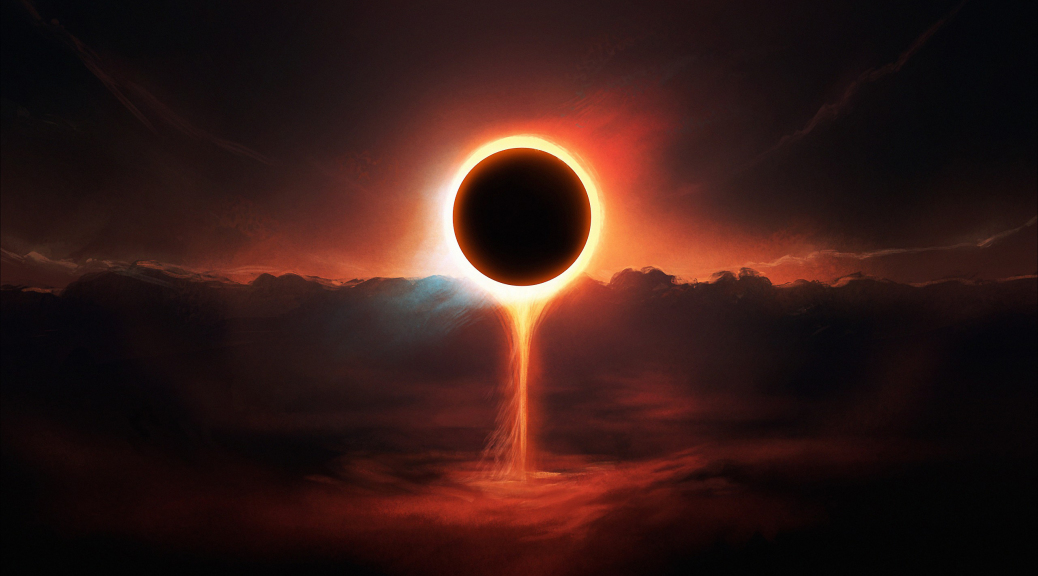
by Moe | May 15, 2021 | Meaning of Symbols
Hidden behind the history of the world lies the unseen forces and a second hidden history of religion, secret societies, secret orders, and their symbols.
One of these mysterious symbols is called the Black Sun, which represents one of the most essential parts of the invisible forces that govern the alchemical processes of all life.
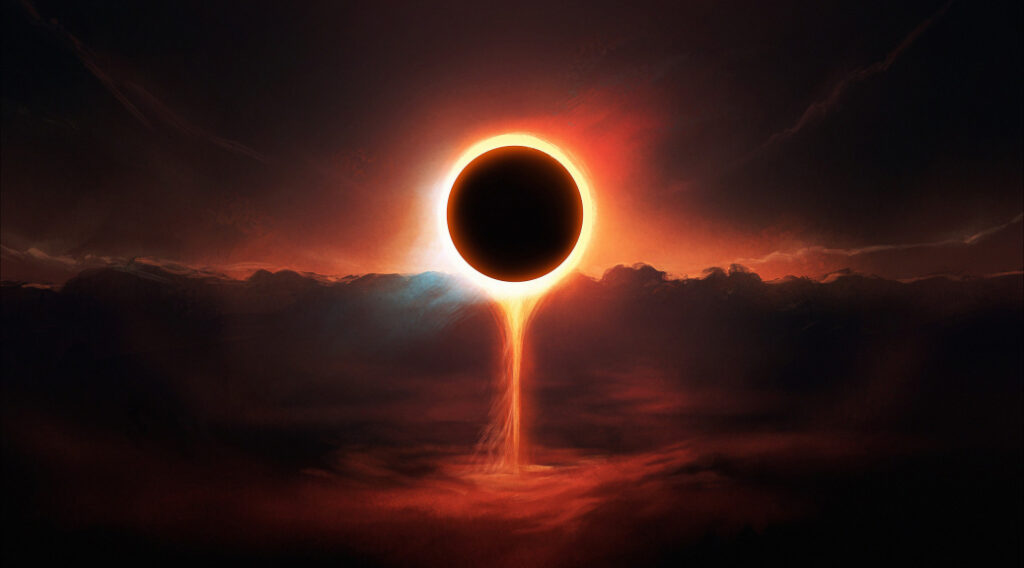
Various esoteric teachings show us that it was known as “the shadow side of the sun,” whose name we know as the Black Sun and called by its Latin name, Sol Niger, the German Schwarze Sonne the Sonnenrad, German for Sun Wheel.
In Theosophy, it is known as the “Invisible Sun” and is connected in the occult sciences to prime or dark matter, earth, the Axis Mundi, a mother’s womb, the Self, and the unconscious or what Jung would call – the Collective Unconscious.
The word matter is derived from mater and also means Mother. It is from the Black Earth and our Mother’s dark womb that we humans are created on the So Within molding us into the person we will become in which we find God who said, “Let there be light,” and from this creation, we are born as co-creators with God on the So Without.
In Revelation of the Scripture, we learn of this “Sun black as sackcloth,” and in Joel, “the sun shall be turned into darkness” (Joel 2:30-31); and Isaiah says,” I clothe the heavens with blackness, and I make sackcloth their covering” (Isaiah 1:3).
The Black Sun can also be called the Earth-Sun. A biological force or earth hive mind that molds our very realities from our bodies to our lives and eventually consumes and turns all things black.
This is why I believe we find the Black Sun microcosmologically represented in the pupil of the human eye, which is symbolic of the ancient inner Self or ‘I’ and connected to the macrocosmic – Black Sun.

When our outer gaze is turned inwards, we discover the connectedness with the hidden inner Self and of other beings and things of the ‘hidden’ reality and unseen forces of humanity whose study is formally called ‘The Occult’.
Symbolized also by the circumpunct that Manly P. Hall calls, “The most primitive and fundamental of all symbols is the dot.” (Lectures on Ancient Philosophy)
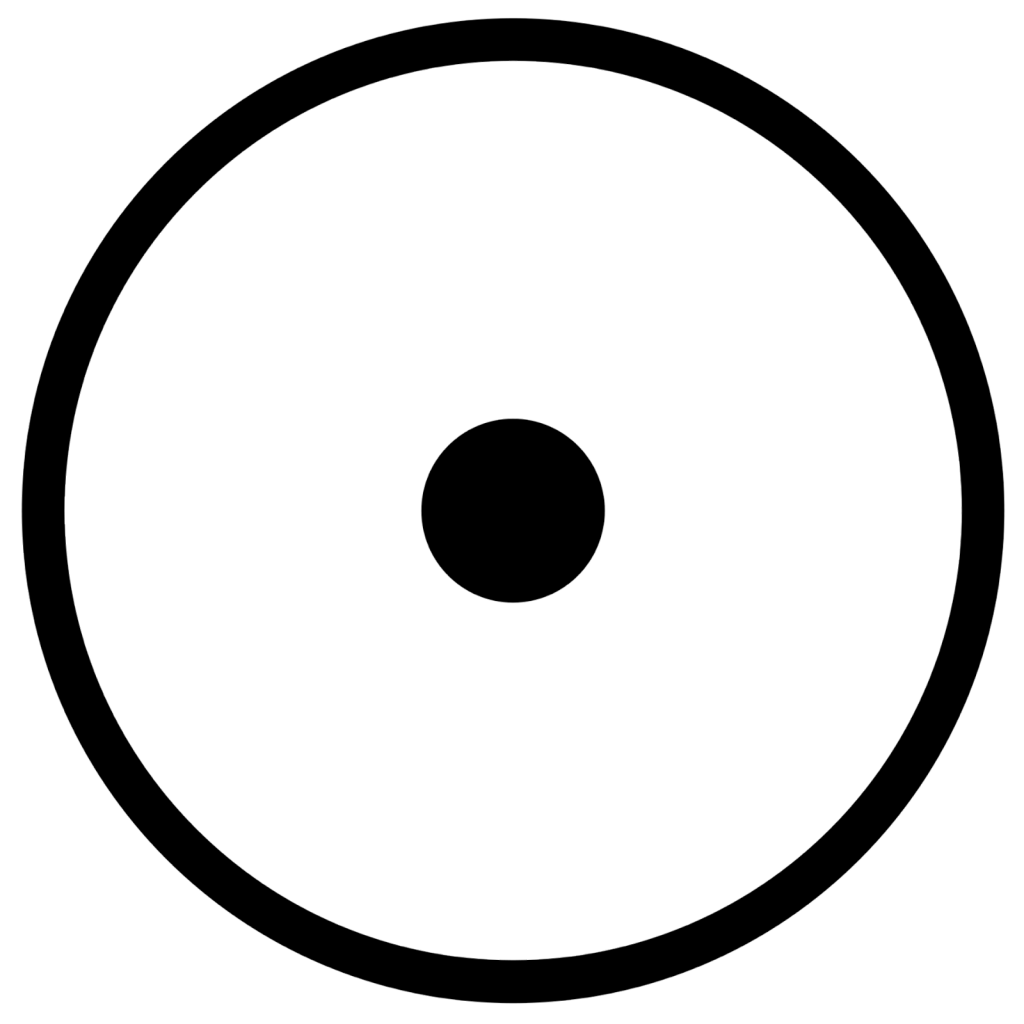
Hall had written;
“The keys to all knowledge are contained in the dot, the line, and the circle.
The dot is universal consciousness, the line is universal intelligence, and the circle is universal force – the threefold, unknowable Cause of all knowable existence (the three hypostases of Atma).
In man the spirit is represented by the dot and conscious activity or intelligence by the line.

Conscious activity is the key to intelligence because consciousness belongs to the sphere of the dot and activity to the sphere of the circle.
The center and the circumference are thus blended in the connecting line – conscious activity or intelligence.
The circle is the symbol of body and body is the limit of the radius of the activity of mind power pouring out of the substance of consciousness,” Hall concluded.
As Comte de Saint Germain once said, “Attention is the key; for where man’s attention goes, there goes his energy, and he himself can only follow.”
And Carl Jung tells us, “Consciousness, no matter how extensive it may be, must always remain the smaller circle within the greater circle of the unconscious, an island surrounded by the sea; and, like the sea itself, the unconscious yields an endless and self-replenishing abundance of living creatures, a wealth beyond our fathoming.” (CW 16, Para 366)
In the psychological sense, the Black Sun symbolizes the Occult Power of the Microcosm of the Self.
Humans either consciously or unconsciously shape their very beings and the world of matter in their lives and the world around them. If we partake on the path of esoteric and occult knowledge, it can take us directly to the Dark Night of the Soul to confront our own shadow and face our sins and self-made Demons.
Marsilius Ficinus had described the Black Sun in “Liber de Arte Chemica”;
“The body must be dissolved in the subtlest middle air: The body is also dissolved by its own heat and humidity; where the soul, the middle nature holds the principality in the color of blackness all in the glass: which blackness of Nature the ancient Philosophers called the crows head, or the black sun.”
Here is an image of the Balck Sun’s Putrifaction emblem of Philosophia Reformata by Johann Daniel Mylius.
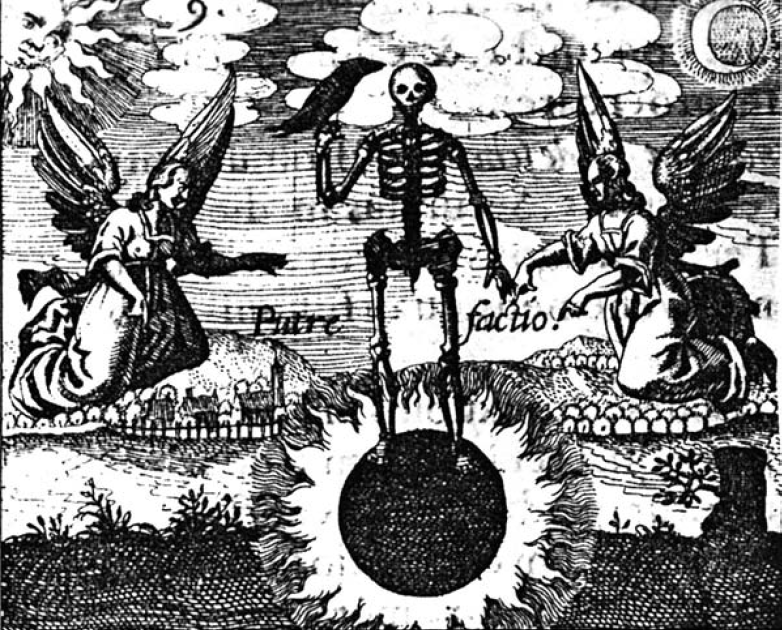
Carl Jung calls it the black earth and connects it with antimony;
“It is then the black earth in which the gold of the lapis is sown like the grain of wheat … It is the black, magically fecund earth that Adam took with him from Paradise, also called antimony and described as a ‘black blacker than black. ‘”
The Russian occultist and founder of Theosophy, Helena Blavatsky, said the black sun is also known as the invisible sun related to “prime matter and the unconscious.” She had written;
“The medieval alchemists spoke of the sol niger, the black or invisible sun which they related to prime matter and the unconscious. The visible sun is at the nadir, out of which depths it must ascend toward its zenith, the invisible apex that oversees the creation of light.”
According to Rudolph Steiner, the Sun sucks in light from cosmic space. Darkness itself is no mere absence of outwardly radiating light, but its inward radiation from a cosmic circumference towards a center – a ‘Black Sun’.
One of the earliest representations of the Black Sun comes to us from who is sometimes called the spiritual father of Paracelsus, Solomon Trismosin, who had created one of the modern classics of illuminated alchemical manuscripts called Splendor Solis (“The Splendor of the Sun”), written in approximately 1535.
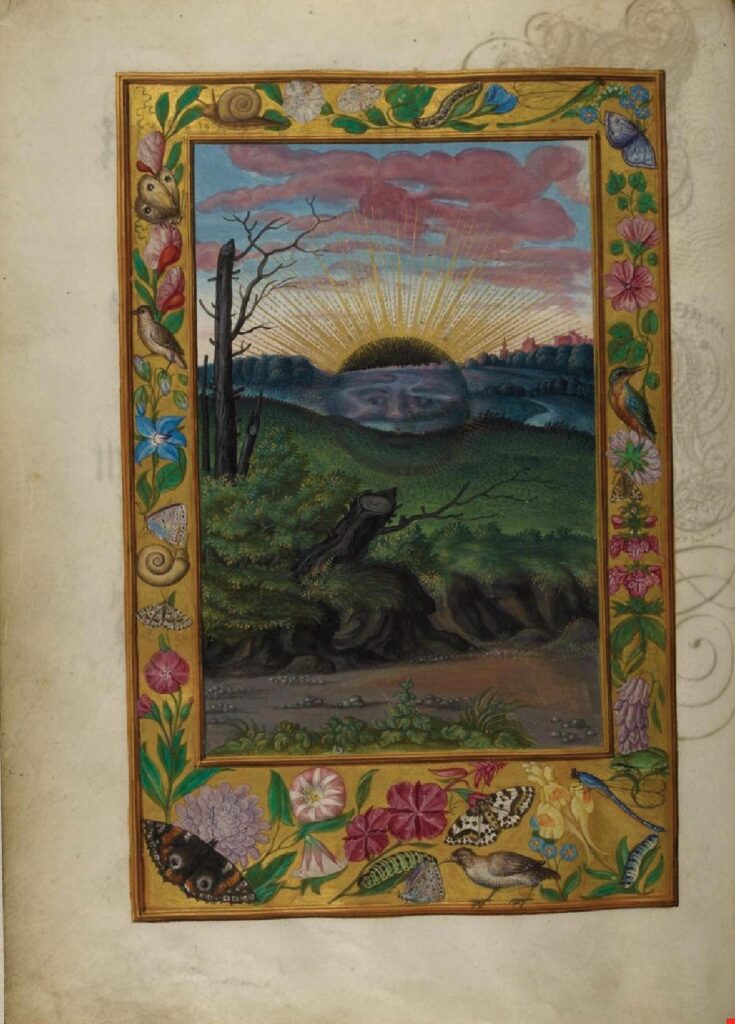
It tells the story of how the alchemist intervenes in the mechanics of creation while at all times remaining in harmony with nature and supporting its growth. There are 20 copies worldwide, with the earliest version housed at the Kupferstichkabinett (Museum of Prints and Drawings) at State Museums in Berlin, and another copy created in 1582, is housed at the British Library, London.
I believe a famous person in having undergone this process is the 2nd Century Historian, Strabo, who had eluded to his forehead and some parts of his body are of a white color, the rest of his body being black.
Here is another image below from the manuscript of the Splendor Solis that I believe metaphysically shows what Strabo was alchemically describing but shows the white color as red. The person who is mainly black in color and naked emerging from a type of black lake and is greeted by a royal Goddess who is handing him a red cloak or overcoat for his reward.
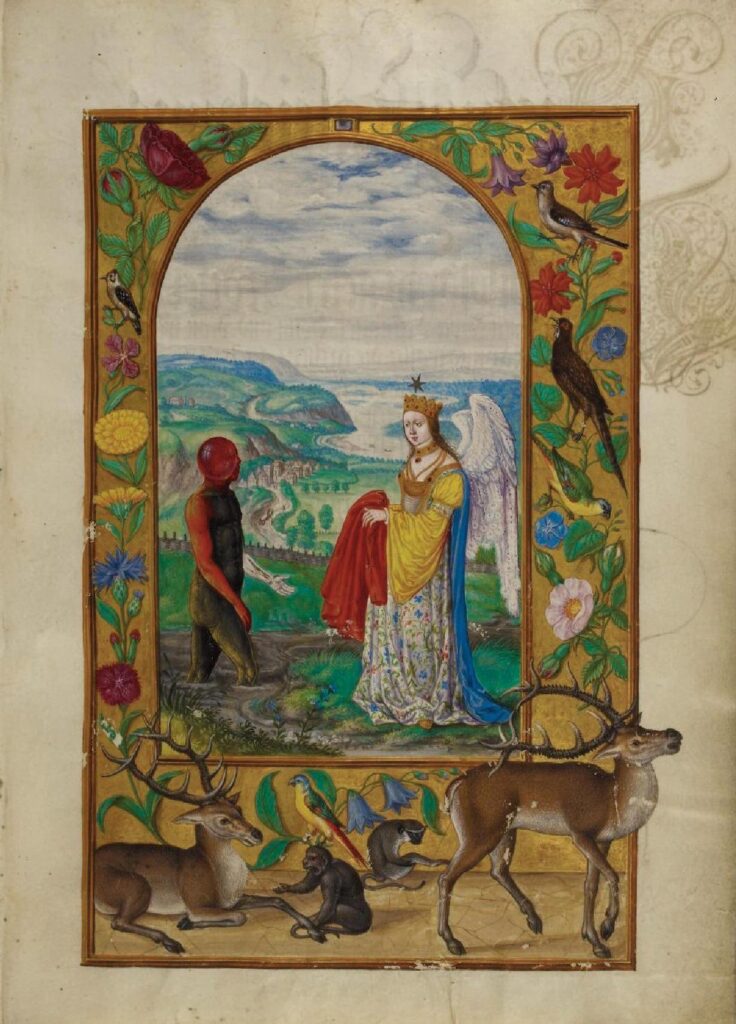
The Black Sun holds primary sway over prima matter.
Thus, it serves as the creator, progenitor, and legislator of our very 666 Carbon bodies since the beginning of time.

An alchemical symbol refers to the birth, decay, and putrefaction, which is the first, middle, and ending stage of all alchemical processes.
One that I believe as time evolves we will learn scientifically deals with what is called Dark Matter and the sun turning black with sackcloth related to what I have called a “secret mycelium network or internet” that modern researchers suggest that matter in the universe is distributed in a “cosmic web” of filaments.
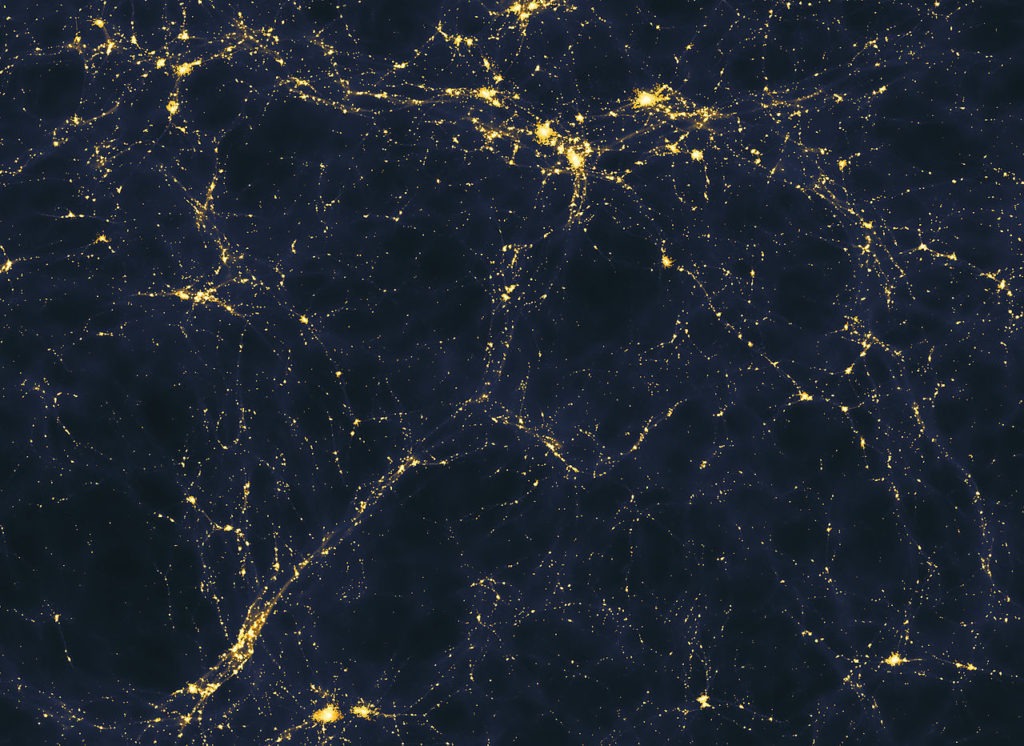
Cosmic filaments of massive thread-like web formations (sackcloth) comprising huge amounts of dark matter (Black Sun) which divide the universe into a vast gravitationally linked lattice interspersed with enormous dark matter voids.
Filaments and dark matter that I theorize connects us, humans, to one another and all life via specific fungal organisms that can act as our Archons to be either beneficial (symbiotic) or detrimental (parasitical).
We act as resonators for the very elementals and microorganisms that become our Archons.
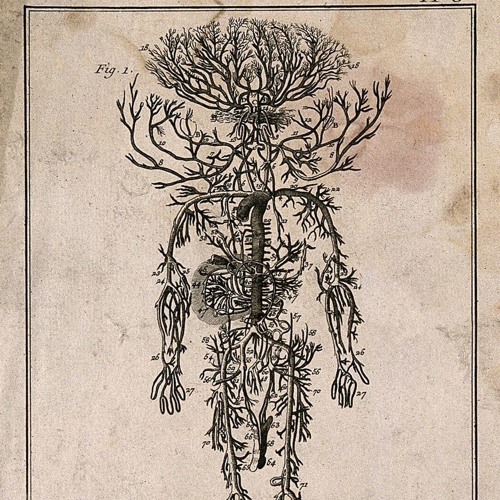
An ancient and primordial connection to the all that is part of a hidden reality of who we are and is So Within and So Without us all.
If you would like to read the story of how the NAZI’s used a modified version of the Black Sun (Schwarze Sonne, and the Sonnenrad) symbology in dark occult practices and Black Magic for the highest members of the SS, please click here to read my article.
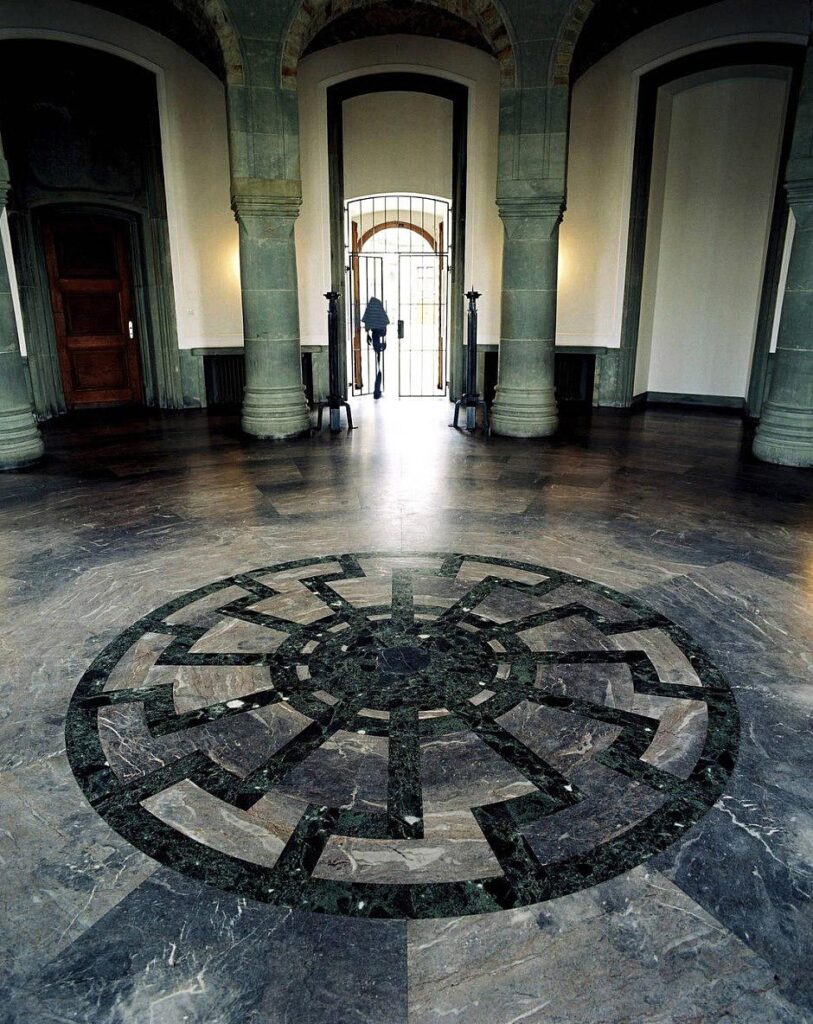

by Moe | Jan 25, 2021 | Demons, Drugs, Mind Control Research
A Colorado mother pleaded guilty this week to the murder of her 5-year old daughter, who saw monsters and demons after accidentally drinking water from a glass bong used to smoke methamphetamine.

Stephanie Alvarado, 27, was convicted of second-degree murder of her daughter Sophia Larson, who was left “seeing monsters and demons” after drinking from her mother’s water pipe in December last year.
What interests me about this particular case is the fact that a 5-year-old child who has never used drugs ingests methamphetamine and then immediately starts seeing monsters and demons just like hardcore METH addicts claim to see when they commit crimes such as assault and murder. It is as if the METH acts as a conduit or a channel to this spiritual world that when one consumes this drug, they can then tune into it and see things that other people cannot or they are just hallucinations, but why would a 5-year-old child make such claims?
Alvarado had smoked METH two of her cousins when the child drank water from a bong and was seeing demons, but she refused to get her daughter medical because she could lose custody, according to the police report.
Her two cousins, Daniel Alvarado and Bertha Ceballos-Roma, were also charged with the crime. Daniel is awaiting sentencing, and Bertha was deported to Mexico.
Apparently, the METH Demon, Alvarado, has a history of uncontrollable rage, which is very common with METH addicts. She is also facing an additional six years in prison for a domestic abuse charge for attacking the father of the dead child, who happened to be her ex, just hours before her first court appearance over poor Sofia’s death.
Alvarado faces a potential of 54 years for her crimes.
Little Sophia’s dad, Alec Larson, said his ex had been a good mother until she got hooked on drugs, which he blamed for their breakup.
“I didn’t think we were going to bury my daughter. I thought we were going to bury her mom and it just took a turn for the worst,” he told Fox 31.
Here is the Sheriff’s press release of the crime;
Garfield County Coroner’s Office
Robert M. Glassmire
Coroner
Garfield County Coroner’s Office
1806 Medicine Bow Court
Silt, CO 81652
Office 970-665-6335
On Call 970-319-0311
Fax 970-876-1931
PRESS RELEASE
Date: February 12, 2020
Subject: Child death investigation involving five year old female on December 11, 2019.
Identity of Deceased: Sophia Larson, 5-years old, resident of Garfield County, CO.
On December 11, 2019 at approximately 3:44am the Garfield County Coroner’s Office was dispatched to Grand River Hospital in Rifle, CO for a death investigation involving a five year old girl. The subsequent law enforcement and coroner’s office investigation suggested that the child may have ingested methamphetamine.
An autopsy was completed the same day by the coroner’s office contract forensic athologist. In January 2020, toxicology results were completed and showed that the decedent had a very high level of methamphetamine in her system. The forensic pathologist determined the cause of death to be “methamphetamine intoxication.” The manner of death is certified as “accident.”
In determining the manner of death, The Garfield County Coroner’s Office adheres to the principles in the NAME (National Association of Medical Examiners) “A guide For Manner of Death Classification.”1 The manner of death is a medical classification for statistical purposes and the manner of death certification has no bearing on criminal justice proceedings, or if law enforcement or prosecutor should or should not charge a person for a violation of criminal statute.
Respectfully,
Robert M. Glassmire
Garfield County Coroner

by Moe | Dec 29, 2019 | Freemasonry, Gnosis, Gods & Goddesses, History of the Brotherhood, Latest Media
Plato, writing in approximately 360 BC is the first philosopher to bring forth the concept known primarily in Gnosticism as the Demiurge which was derived from the “Platonic theory of creation out of primordial matter.” His theory was described in his most infamous book, Timeus which was based on his dialogue with his former Master, Socrates.
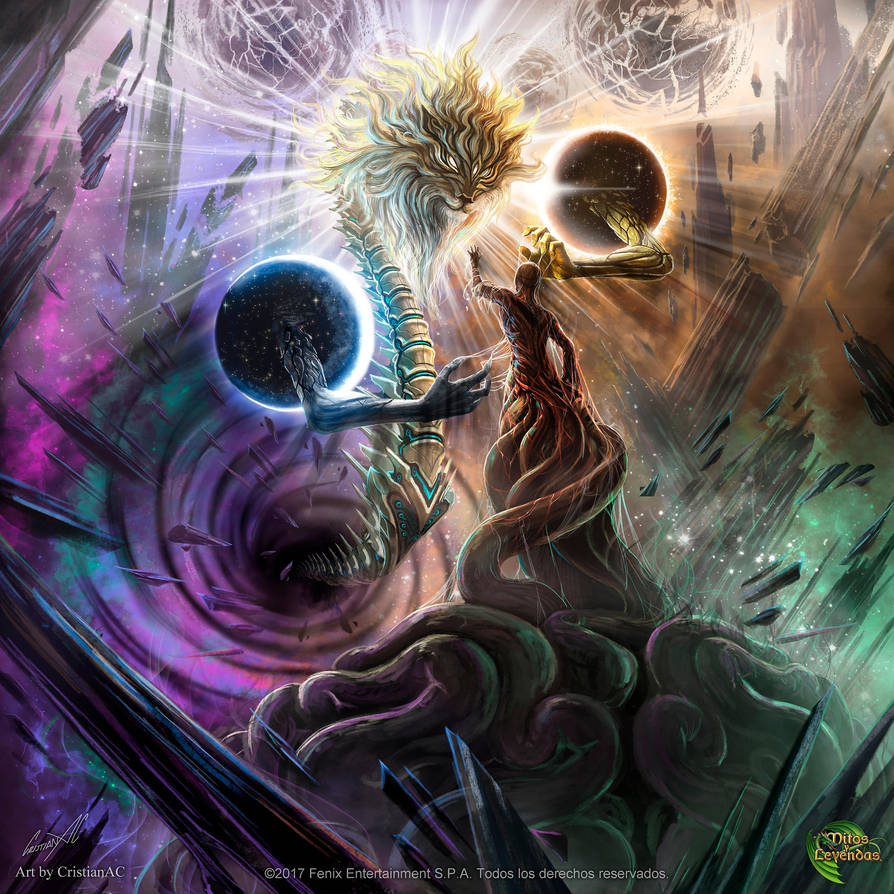
Plato’s theory of the Demiurge is the result of carrying on the Greek philosophical tradition of studying the As Without ie: nature of space and time to that of his master Socrates who shifted the focus of his students from studying the world and universe which they believed to be a living and breathing organism to the moral issues and the nature of man as it relates and how it is all interconnected with one another.
Plato’s cosmology had put forth a theory that the behavior of human beings could not be understood purely by their behavior and or in mechanistic terms but required a knowledge of the environment ie: the world and universe in which the self is intimately linked.
These concepts of the self later led to the ideas that humans are a microcosm of the great macrocosm and to the most infamous Gnostic axioms, “Know Thyself” and “As Above So Below, As Within, So Without.”
In Timaeus, Plato continues the dialogue as the character Timaeus with Socrates in which he refers to the Demiurge as a benevolent entity who “fashioned and shaped” the material world which remains imperfect. Plato’s cosmology of the “world-forming God” (Srjiuovpyos, demiurge) is the agent who takes the preexisting materials of chaos, arranges them intelligently according to the models of eternal forms, and produces all the physical things of the world, including human bodies formed or shaped out that which is not being, ie; space, “with regard to the Ideas.”
According to the Timaeus, humans live on earth at the center of the kosmos which he compares to one unique perfect cosmic organism, in whose image we have been created, and whose nature and destiny have been ordained by unseen forces from eternity. Plato’s Demiurge became the foundation of the natural philosophical concept called Organicism which views the universe and its parts as an organic living organism based on the Ancient Greek view that the world is orderly and alive.
Platos theories are a continuation of the teaching of previous Philosophers such as Pythagoras who said that the world as a living breathing being (Robinson, 1968) and claimed that “The whole air is full of souls which are called genii or heroes” which played such a prominent role in Greek creation stories for many centuries. The ancient mythos that I will attempt to prove in my next article on the Demiurge is now being validated by science to become part of our new organic reality based on Truth rather than theories.
It is interesting to note that Plato makes it clear that in attempting to explain the Demiurge and understand the “beginning,” Socrates and his friends specify that they do not expect to find the “truth,” but only a “likely story” (eikos mythos), which can be construed today as philosophical theories, worthy of scientific belief.
According to Plato’s “likely story,” the four physical elements of earth are water, air, and fire had existed before the creation of the world and the Demiurge created the world out of primordial material. The Demiurge creates an intelligent universe because intelligent life is better than mere life. It is alive and intelligent filled with mortal organisms that act as a microcosm of the great macrocosm.
Plato mentions the “primordial receptacle” which is defined as “empty of all forms” and it receives all things in a “wondrous” way, and its connection to the intelligible is “incomprehensible.” He describes the primordial receptacle as “not a substance” but merely an amorphous “stuff” that is not “tangible” and is “in no way perceptible to the senses.”
The meaning of primordia is an organ, structure, or tissue in the earliest stage of development from the Latin, neuter of primordius ‘original’, from primus ‘first’ + ordiri ‘begin’. A receptacle is defined as a container, device, etc., that receives or holds something.
This concept of a primordial receptacle had led me to what I believe is one of the best modern interpretations of the Demiurge that I have found and will scientifically expand upon in the future is from, Baruch Spinoza who was a Dutch philosopher of Portuguese Sephardi origin and considered a radical by his contemporaries. He had written, “Alles ist eins, und eins ist alles.”
He says, “The Demiurge is the space that holds the universe. He himself being one is the universe”
In researching the various interpretations from Plato, Neoplatonists, the Gnostics, early Judeo Christian writers, and Church Fathers, the main consensus is that he is the “God of Matter”, “Judge and sanctioned by God himself,” “Lord of the Material Realm and Flesh” and the Gospel of Phillip reveals to us that the bad angels of the Demiurge are known as the “domesticated ones” that are “wild and living apart,” and who are “submissive and obedient” in which Sophia uses them in “preparing for everything to come into being.” (Gospel of Philip 60:24-31)
To explain the Demiurge in the most simplest terms, we can say that he is an ancient philosophical concept that has been used since the time of Plato (Timaeus) to describe an organic entity, diety and even a God that was endowed by the Universe with a special type of the creative energy for intelligently fashioning, molding, maintaining, and even legislating what we know as you, me, and the world.
In Freemasonry, the Demiurge is known as the “Great Architect of the Universe or G.A.O.T.U.” and the Masonic motto “ORDO AB CHAO.”
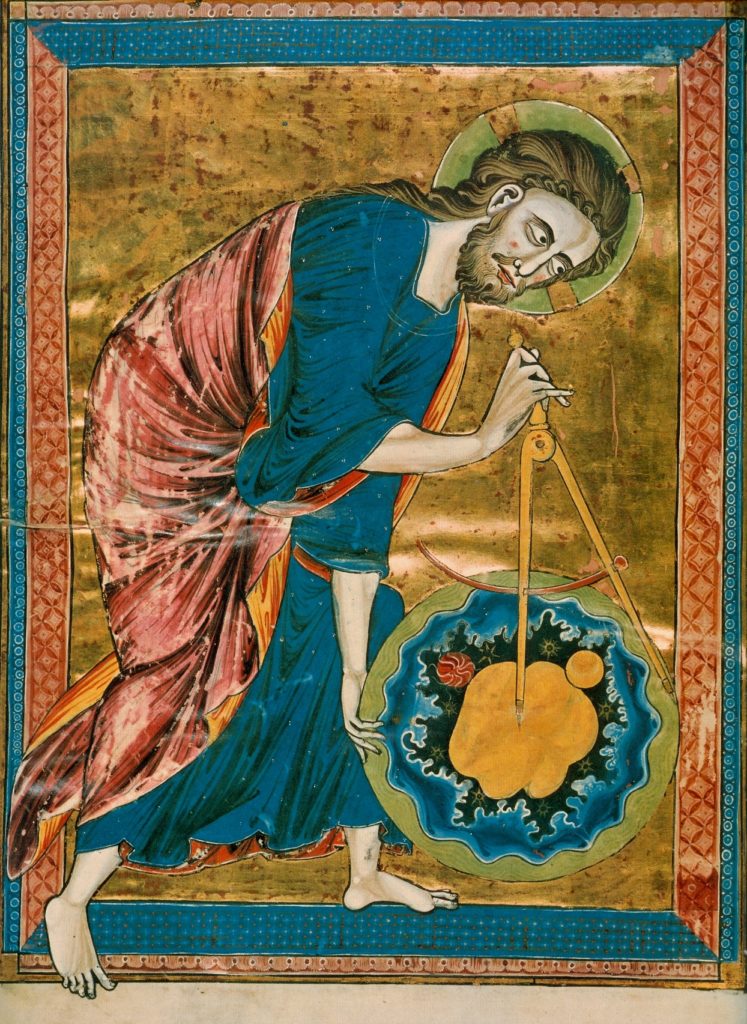
To Plato, space was the “nothing ” out of which the world of phenomena based on ideas that take the shape of mathematical forms in which space is then molded into the world of Ideas. These ideas are now mathematical structures that provide the intermediate link from the phenomena of pure “forms” born from the world of Ideas.
The ancient Greek word idea was spelled “εἴδω or eídō” and was pronounced I-do. The verb oida (to know) comes from the root eido (to see). In Plato’s philosophy, he calls the more real world, the world of eidos (idea in English) which is the Matrix or material reality constructed by man through ‘Forms’ or ‘Ideas’. This is the Platonic Eidos or Idea which is the main premise behind “The theory of Forms or theory of Ideas” to represent the most accurate reality.
The Greek words found in the New Testament that are often translated in English as “know” and “to see” are “eido, eida, eidos, oida, ida, ginosko, epiginosko, epistamai, gnosis and epignosis.” These words have the same semantic range and general meaning as the Greek words “ginosko and eido” are translated as, “to observe or to come to know through observation – to perceive and understand.”
This is why the word idea means, “to conceive anything in the mind; also a model, a copy to be imitated.”
To copy ideas of a philosophical model and expand upon its sacred instruction is the very reason that since the beginning of recorded time, the greatest philosophers, religionists, and scientists are almost always imitated and honored by those who have gone after them. A divine right of succession that makes the Son the Father just like Plato had done with the teachings of his spiritual forefathers being Pythagoras and Socrates.
As if we are all products of creation and from the world of ideas, we are Sons molding one another from the First Father, and then if we supersede these spiritual teachings of our Forefathers as was their desire, we would become Fathers ourselves whose Philosophies develop or enhance religious tradition, doctrines, laws, and the foundation of all sciences from the beginning of recorded time. As if we are passing the baton of ideas to one another which are molds meant to be expanded upon and grow rather then remain the same or stagnate which is the first phase of decay/death.
By doing so, we break free of the Demiurge.
This phenomenon of ideas connected via space and time I intuitively experience almost every day in my research of these ancient concepts through the thread of time when I encounter the very same people such as Pythagoras, Plato, Gnostics, and Church Fathers stretching back thousands of years, over and over again. Then there is the current world of modernity where we use the 5G internet as a vehicle in space to connect with like-minded souls around the globe who seem to be operating in the same frequency in the air with this same philosophical research.
Hence, “You Will Know Them by Their Fruits.”
This is why I believe Plato is honored by Christian Fathers as one of the premiere Gnostics and his teachings became part of Christian doctrine while other Gnostic concepts were analyzed and deemed to be inappropriate for the teachings of Gentiles. In speaking against the heresies of these ‘other Gnostics,’ Irenaeus had said that;
“Plato is proved to be more religious than these men, for he allowed that the same God was both just and good, having power over all things and Himself executing judgment, expressing himself thus, And God indeed, as He is also the ancient Word, possessing the beginning, the end, and the mean of all existing things, does everything rightly, moving round about them according to their nature; but retributive justice always follows Him against those who depart from the divine law.
He continues, “Then, again, he points out that the Maker and Framer of the universe is good. And to the good,
he says, no envy ever springs up with regard to anything;
thus establishing the goodness of God, as the beginning and the cause of the creation of the world, but not ignorance, nor an erring Æon, nor the consequence of a defect, nor the Mother weeping and lamenting, nor another God or Father.”
From Plato, the next interpretations of the Demiurge would come from the likes of Philo of Alexandria, Ptolemy, Marcion, Valentinus, and early Church Fathers who all expanded upon Plato’s originally theory which I will explain below. I will also attempt to expand upon Plato and his Gnostic predecessor’s “likely story” of the Demiurge using modern science which I believe will if it has not already become in the year 2020, a true story, the year of the Demiurge.
One of the earliest descriptions from the school of Plato comes down to us from Philo of Alexandria who says, “God is not only the Demiurge or Architect of the world but also its Creator.” (De Somn. 577) Plotinus, who is considered the founders of Neoplatonism had said, “the mundane soul (pvpavia, that quickens the material heavens), and our own souls rank next in order to the Demiurge” [Plotin. Enn. II. i. 5].
The Marcionites, the followers of the Doctrines of Marcion (Rome 140-150 AD) claimed that Jesus was the Son of the True God, who came to reveal the existence of his Father,” and “to deliver man from the empire of the Demiurge.” According to Origen, the Marcionites held that the good principle governs the Christians, the creating principle the Jews, and the evil principle the heathen.
The main tenants of the Marcionite system were to deny the influences of the flesh in which the Demiurge was the ruler by condemning marriage, wine, and whatever is grateful and pleasant to the body.
Ptolemy, in his Letters to Flora said the Demiurge acts as “the arbitrator of the justice which depends on him” (Letter to Flora 7:5) and he “established a rest for those who obey him, but for those who disobey him, he also established punishments” (Tripartite Tractate 101: 25-28).
“The one who judges and punishes is . . . the law-giver himself” (Herakleon Fragment 48). According to him, the Demiurge’s role as a judge is sanctioned by God himself. He is the “the servant commissioned for that purpose, who does not bear the sword in vain, the avenger of the king” (Herakleon Fragment 48). Judging and punishing the wicked as he rewards the virtuous, he acts as a servant of the true God. However, the spiritual ones who have attained Gnosis appear not to be subject to his judgment. Because of their redemption, “it has come to pass that they can neither be detained nor even seen by the judge” (Against Heresies 1:13:6)
Valentineus , the founder of the Valentinians says but folly is the power of the Demiurge, for he was foolish and devoid of understanding, and imagined himself to be fabricating the world. Valentinus quoting the quaternion said the Demiurge is “a source of the everlasting nature having roots; “and Sophia (is the power) from whom the animal and material creation has derived its present condition. But Sophia is called “Spirit,” and the Demiurge “Soul,” and the Devil ” the ruler of this world,” and Beelzebub “the (ruler) of demons.”
According to Valentinian tradition, the Demiurge is formed as an “an image of the Father”(Excerpts of Theodotus 47:1-3) and ‘god’ and ‘demiurge’ and ‘king’ and ‘judge’ and ‘place’ and ‘dwelling’ and ‘law'” (Tripartite Tractate 100:21-30).
It is interesting that the Valentinians find no issue in also calling the Demiurge by the names “Father” and “God” to describe him (cf. also Against Heresies 1:5:1, Valentinian Exposition 38). In their system, he is an actual image of the true God, but in a fallen state since the Demiurge is ignorant on account of his non-spiritual nature when compared with the true God and his Son, Jesus Christ, he is “coarse” or “rough” (Excerpts of Theodotus 33:4).
Church Father Irenaeus said that in order to deliver the souls of mankind from the Demiurge and put an end to this war, the Supreme God sent his Son Jesus Christ, in the appearance of a body, “dissolving the law and the prophets, and all the works of him that made the world.”
The Demiurge’s son is thus the representative of a union between the systems of the East and of the West.
For God proclaims in Isaiah; “I form the light, and create darkness: I make peace, and create evil: I the Lord do all these things.” (Isa. xlv. 7.)

























